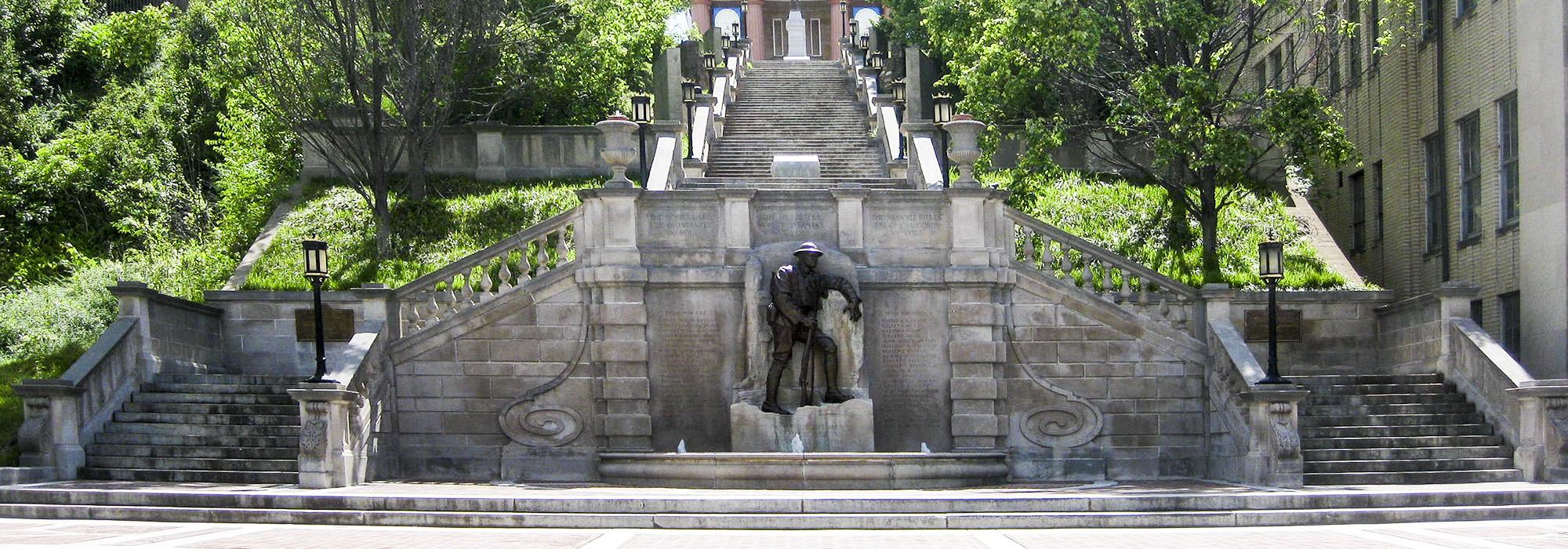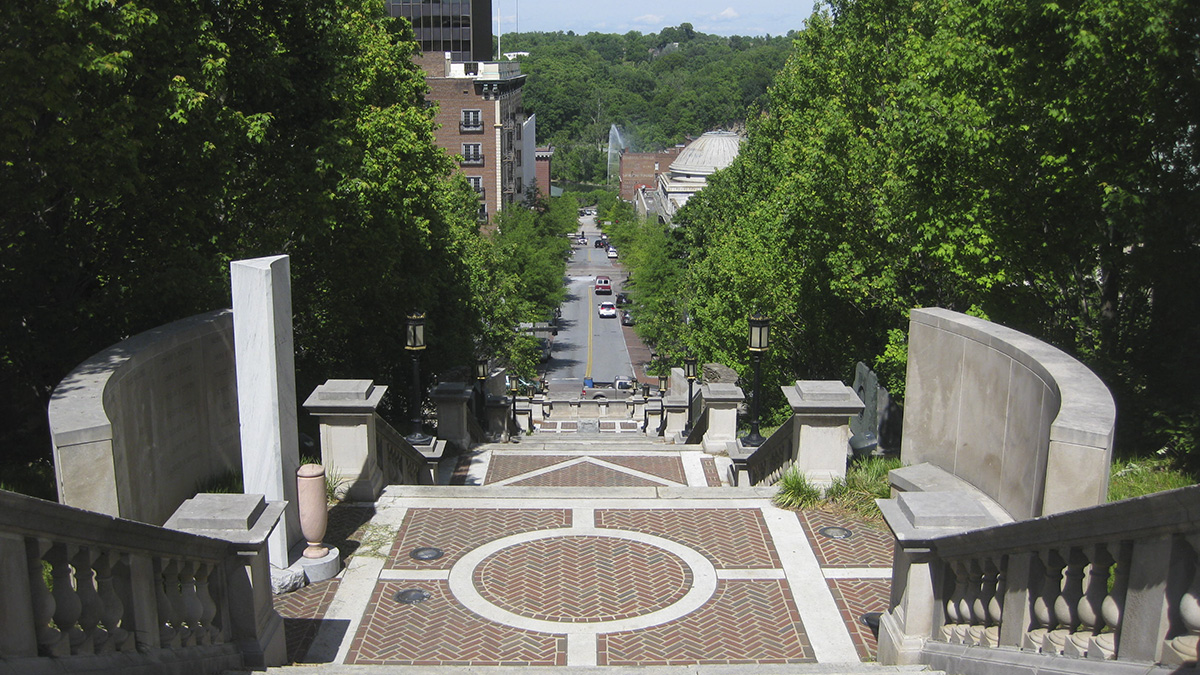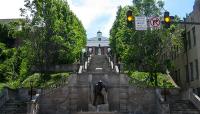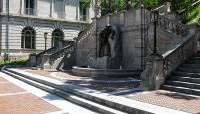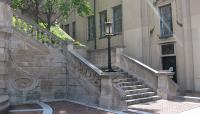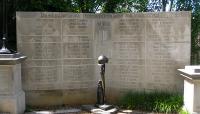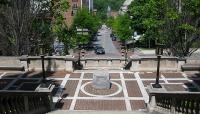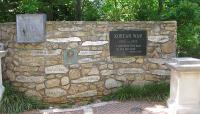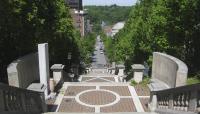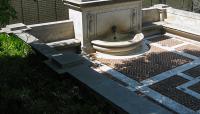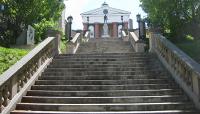Landscape Information
This civic landmark, a block-long series of stairs and terraces on axis with the city’s 1851 Greek Revival courthouse, was constructed in 1924-25 to honor those Lynchburg citizens who fought and died in World War I. Designed by Lynchburg architect Aubrey Chesterman, the steps traverse the city’s steep Courthouse Hill and provide pedestrian access between Church and Court Streets. Prior to the construction of the present steps, in 1882 a plaza, stone stairs, and a fountain—all designed by August Forsberg— replaced a dirt path. A year later, a statue of a fireman was added to the fountain to commemorate five firefighters who lost their lives in 1883. Today, the Terrace’s richly articulated design also includes monuments to veterans of the Civil War, the Spanish-American War, World War II, and campaigns in Korea and Vietnam. Three additional markers commemorate civic milestones.
Chesterman’s Beaux-Arts design comprises ten stair sections (totaling 141 steps) and nine terrace landings featuring limestone balusters, detailed brick paving, stone retaining walls, granite steps and foundations, monuments, and statuary. Charles Kecke’s sculpture The Listening Post (often referred to as the Doughboy) was installed in 1926 at the base of the stairs in memory of veterans of World War I, replacing the statue of the fireman.
Significant renovations to Monument Terrace, including drainage improvements, rehabilitation of the stonework and statuary, and new plantings to restore the character of the original design, were completed in 2004 by John Milner and Associates. Monument Terrace is listed as a contributing feature within Lynchburg’s Courthouse Hill/Downtown Historic District which was listed in the National Register of Historic Places in 2001.



